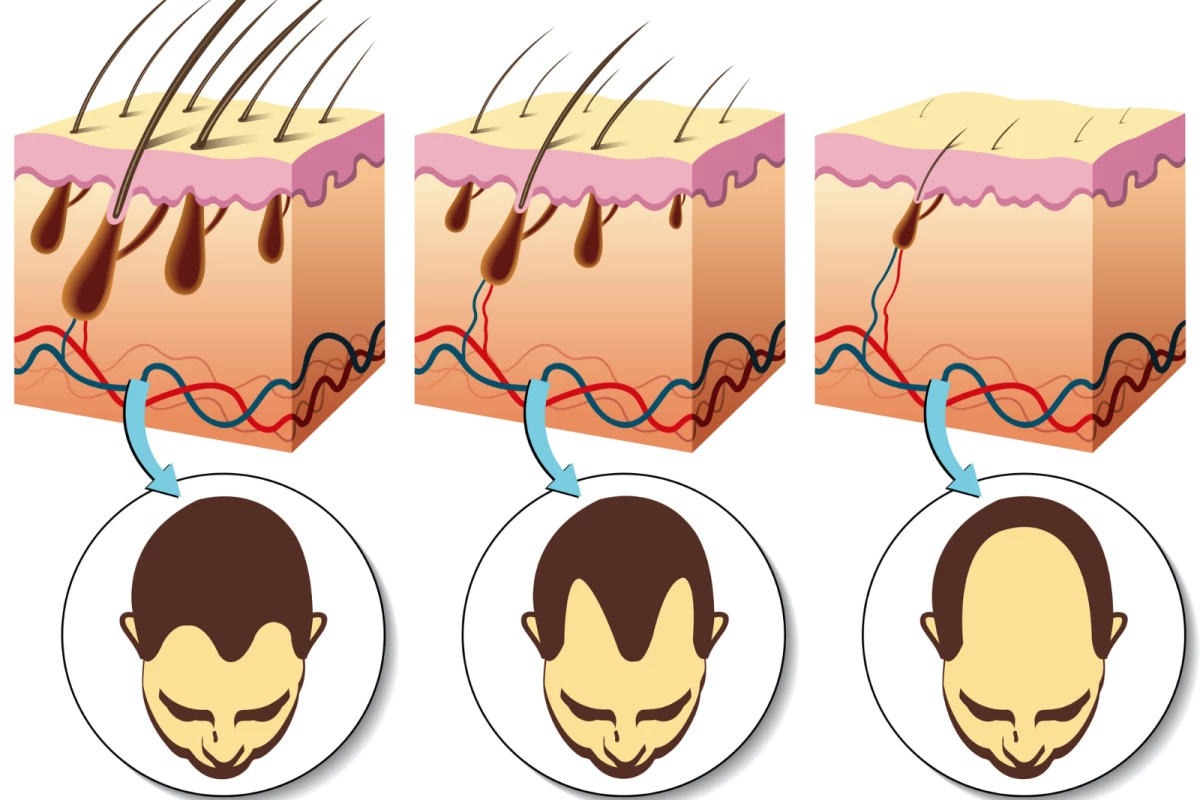Recent advances have put some interesting possibilities on the table when it comes to tackling hair loss, from topical solutions packed with stem cells, to 3D-printed hair farms, to growing hair with a patient's own cells. Scientists in China are now throwing another one into the mix that uses a dissolvable microneedle patch to stimulate hair growth, with the technology proving high effective in mouse models of hereditary pattern baldness.
Led by scientists at China's Zhejiang University, the researchers set out to develop new treatments for the most common of hair loss conditions: male- and female-pattern baldness, also known as androgenic alopecia. The scientists sought to tackle the issue by focusing on what they say are the primary mechanisms behind this, namely oxidative stress and poor circulation.
This relates to the combination of accumulating reactive oxygen species in the scalp that kill off the cells behind new hair growth, and a lack of blood vessels around the follicles to provide them with nutrients and essential molecules. In this way, the team hoped to come up with a two-pronged approach to androgenic alopecia, and their solution starts with previous research carried out on liver injuries and Alzheimer's.
Through earlier experiments, the scientists had developed nanoparticles packed with the chemical element cerium, which proved effective at reducing oxidative stress seen in those conditions. Adapting this technology to tackle hair loss would mean coming up with a way for them to penetrate the skin, which led the researchers to the idea of using a microneedle patch for delivery.
First, the nanoparticles were coated with a biodegradable compound called polyethylene glycol-lipid. They were then combined with a substance abundant in human skin called hyaluronic acid and poured into a mold. This formed a dissolvable microneedle patch that was put to the test on mouse models of androgenic alopecia, alongside a control patch.
Both patches proved capable of stimulating growth of new blood vessels around the hair follicles, though the one containing the cerium nanoparticles showed a number of advantages. Its recipients exhibited clear signs of new hair development, such as earlier skin pigmentation and the higher concentration of certain compounds. These mice also had fewer oxidative stress compounds in the skin.
Ultimately, the bald mice treated with the microneedle patch containing the cerium nanoparticles exhibited faster hair regrowth, with the coverage, density and diameter exceeding that of leading topical treatments, according to the research team. While there is a lot of work to do to translate these results to human subjects, the scientists see their microneedle patch packed with cerium nanoparticles as a promising new avenue to explore.
The research was published in the journal ACS Nano.
Source: American Chemical Society




